Eric Dolphy: Freedom of Sound
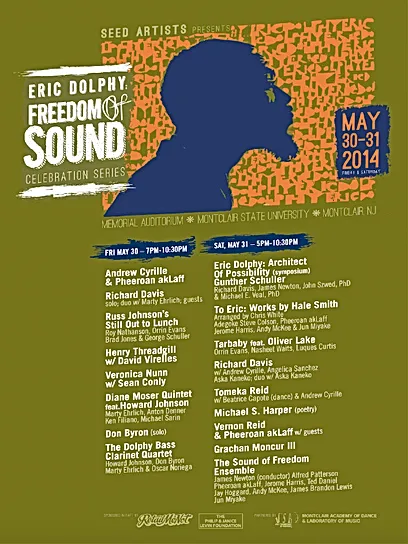
In May 2014, Seed Artists introduced itself with Eric Dolphy: Freedom of Sound—two nights celebrating an underappreciated genius on the 50th anniversary of his passing. Nearly 1,000 people came from across the tri-state area and as far as Georgia, Michigan and Oregon to witness more than 40 musicians, artists and scholars exploring and advancing Dolphy’s singular legacy.
If you were there, you witnessed history in the making: The world premiere of newly discovered Dolphy compositions, which now reside in the Library of Congress. The debut of new works dedicated to Dolphy. New interpretations of Dolphy. Dolphy classics set to vocals. Dance. Poetry. And a symposium featuring Gunther Schuller, giant of modern music and a Dolphy collaborator and friend.
Proceeds helped to fund the work of two very worthy nonprofits—the Jazz Foundation of America, and the Montclair Academy of Dance and Laboratory of Music. As the Seed motto goes: Great Art for Good Works.
Altogether an ambitious proof of concept for a nonprofit with no paid staff, no office or existing budget, no experience producing a festival. Just an idea. True DIY.
We hope that you will help us create the next Freedom of Sound festival—a celebration of Percussion—and a year-round slate of adventurous music and arts programming. Donate. Volunteer.
Below we recap the festival, the first in a Freedom of Sound series dedicated to honoring innovators and masters, and helping to create take jazz and creative music into the future. If you attended, we hope it brings back fond memories; if you did not, we hope to see you at the next one. Better yet, sooner.
Day 1
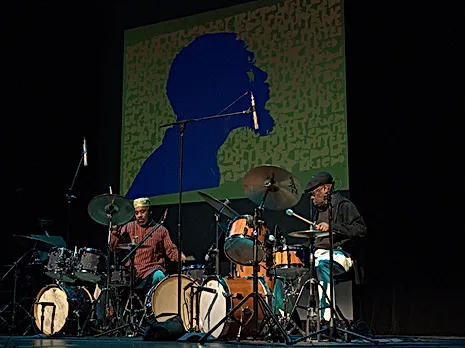
Andrew Cyrille & Pheeroan akLaff
Master drummers (and Montclair residents) Andrew Cyrille and Pheeroan akLaff—Seed’s co-founder and Executive Director—kicked things off with a drumkit homage to Dolphy’s intervalic wizardry. A Dolphy tribute on drums? Yes. Emphatically.
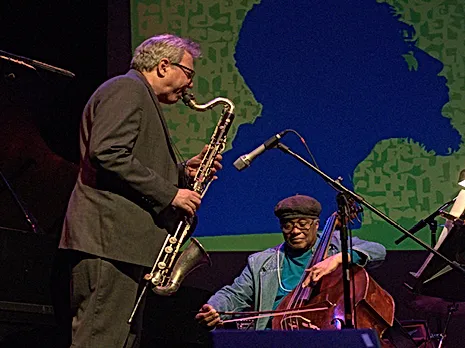
Richard Davis & Marty Ehrlich
Davis, one of the great bassists in jazz history, was our musical guest of honor. He appeared on Dolphy’s seminal work Out to Lunch!—also Iron Man, Conversations and the extraordinary two-volume Live at the Five Spot—and his playing was integral to Dolphy’s sound as it developed in the early 1960s. Multi-instrumentalist Ehrlich is one of our most revered creative musicians and a true student of Dolphy’s music. Davis and Ehrlich’ sensitive and masterful interpretations would have made Dolphy proud.
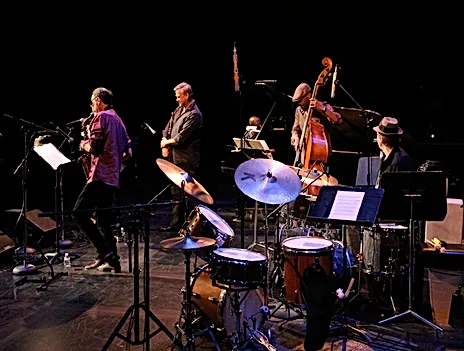
Russ Johnson’s “Still Out to Lunch!”
(Russ Johnson (t), Roy Nathanson (reeds), Orrin Evans (p), Brad Jones (b), George Schuller (d))
A smoking set of Dolphy tunes by reppers of the highest order. The bonus: a Dolphy composition that sat unperformed and unrecorded until they discovered it and made it their own. Orrin Evans sat in on piano for Myra Melford.

Henry Threadgill & David Virelles
Threadgill is one of the most important figures in creative music. We were blown away when he told us that he would debut a new composition dedicated to Dolphy at the festival. The performance, with the ever-nimble and sensitive Virelles on piano, exceeded even our high expectations of things Threadgill. He and the ever-nimble and sensitive Virelles utterly mesmerized the crowd. You could have heard a pin drop. Utterly sublime.

Veronica Nunn & Sean Conly
When the idea arose of putting lyrics and vocals to Dolphy tunes, Seed’s Executive Director, Pheeroan akLaff, knew just the artist to do justice to such a risky proposition: Veronica Nunn. She chose the stripped-down backing of Sean Conly on double bass. The results were inspired. Nunn sang her versions of three tunes: the standard “Tenderly,” Dolphy’s own Music Matador,” and Mal Waldron’s “Fire Waltz,” which they famously performed on Live at the Five Spot. Nunn and Conly not only pulled it off, they set a new standard.Master drummers (and Montclair residents) Andrew Cyrille and Pheeroan akLaff—Seed’s co-founder and Executive Director—kicked things off with a drumkit homage to Dolphy’s intervalic wizardry. A Dolphy tribute on drums? Yes. Emphatically.
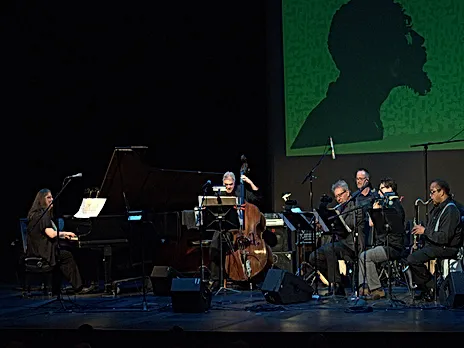
Diane Moser Quintet featuring Howard Johnson
(Diane Moser (p), Marty Ehrlich (reeds/fl), Anton Denner (reeds/fl), Ken Filiano (b), Michael Sarin (d), Howard Johnson (reeds))
Dolphy spent hours on end listening to birds singing in the yard of his childhood home in Los Angeles. Those sounds became part of his sound. Moser has long shared a fascination with the musical palettes and possibilities of birdsong, thus her debut of a birdsong suite dedicated to Dolphy. Composed expressly for the festival. It was an honor to debut this tribute to Dolphy and the creative process. With the added textures from Howard Johnson, Moser’s already-knockout added beautifully to Dolphy’s legacy.
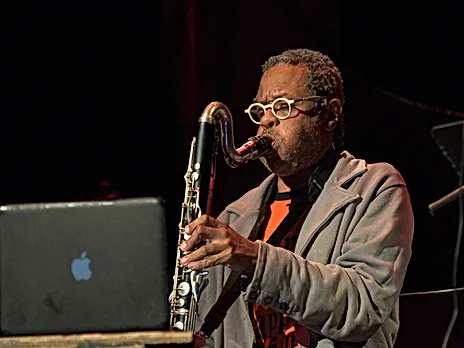
Don Byron
Before he died, Eric Dolphy gave an archive of his personal papers to his friend Hale Smith, the great American composer. Transcriptions, compositions, notes. (An autographed transcription from Edgard Varese!) After Smith died in 2009, his wife, Juanita, bequeathed the papers to James Newton, one of Dolphy’s musical heirs. Among Newton’s many discoveries: previously unheard Dolphy compositions. Never performed, never recorded. Before Newton gifted the archive to the Library of Congress, he graciously granted Seed Artists permission to debut them. Don Byron fully brought a piece for solo bass clarinet to life; a peek into where Dolphy might have gone had he not died so young.
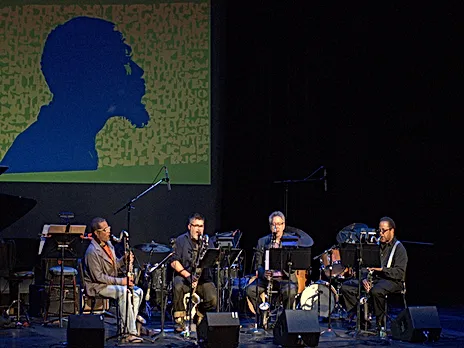
The Dolphy Bass Clarinet Quartet
(Howard Johnson, Don Byron, Marty Ehrlich, Oscar Noriega)
Q: How to end such a momentous evening?
A: Form a quartet of bass-clarinet virtuosos to perform on the instrument that Dolphy revolutionized. Four distinctive voices together for the first time, sounded like they’d been together for years. Their interpretations set the standard for those who will inevitably follow.
Photo by Chris Drukker
Day 2
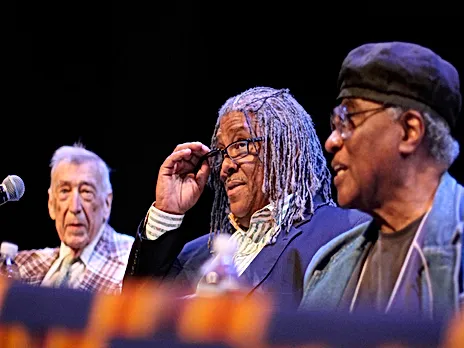
Eric Dolphy: Architect of Possibility (Symposium)
We cannot overstate what a privilege it was to host a symposium featuring such an august panel on Eric Dolphy: UCLA Distinguished Professor and creative force of nature James Newton (moderator); Dolphy colleague and NEA Jazz Master Richard Davis; Columbia Unversity’s John Szwed, Ph.D.; Yale University’s Michael E. Veal, Ph.D.; and of course the distinguished Gunther Schuller, who passed in June 2015, at age 89. Remarkable insights into Dolphy’s singular artistry, the revelations found in his archive, and personal accounts of his unflagging commitment to the music and to humankind. To wit, from Gunther Schuller:
I lived with him one whole week in his very strange little apartment in Brooklyn…went there every day…I listened to him from the minute he got up in the morning, very early, and I heard him—and this is hard to believe—I heard him practice every day fourteen to seventeen hours. And he was of course never satisfied…but just in that week, the amount of detailed rehearsing of how he wanted to play was so, as I say, so incessant. Who practices fourteen hours a day, without stopping?

To Eric: Works by Hale Smith
(Adegoke Steve Colson (p), Jerome Harris (g), Jun Miyake (f), Andy McKee (b), Pheeroan akLaff (d); arranged by Chris White)
A surprise package from Juanita Smith, Hale Smith’s gracious widow, arrived in the mail. Inside, several gems: copies of Polaroids of Dolphy and the Smiths; a copy of a letter from Dolphy’s fiancee, Joyce Mordecai, wrote from Germany to inform them of his death; and two short compositions that Hale Smith had written in dedication to Dolphy. The first, NAME, had been performed only once; the second, NAME, we debuted. Bassist and composer Chris White, who passed in 2015, Beautifully arranged the works, and the group played them with remarkable subtlety and empathy.
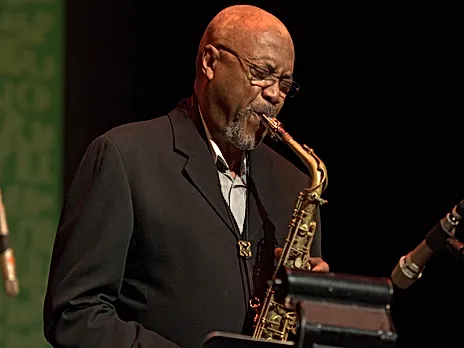
Tarbaby featuring Oliver Lake
(Orrin Evans (p), Luques Curtis (b), Nasheet Waits (d), Oliver Lake (as))
The trio Tarbaby—Luques Curtis subbed here for Eric Revis—has been setting the woods on fire for several years. Adventurous, virtuosic, thoughtful. Kinetic. Fronted for this date by frequent collaborator Oliver Lake, a Montclair resident and perhaps Dolphy’s principal torch-bearer, the group swung through a bristling set of Dolphy tunes.

Richard Davis, Andrew Cyrille, Angelica Sanchez, Aska Kaneko
Davis and Cyrille had played and recorded together, but neither of them had met Sanchez or Kaneko before this date. On tap, a set of free improvisation, something Davis revels in but rarely gets to do in live performance. The result—one of the highlights of the festival, and a bevy of new fans for Sanchez and Kaneko. The audience demanded an encore, and that piece topped them all. Davis was so gassed by the level of play that he decided to bring the group together again for a live concert recording.
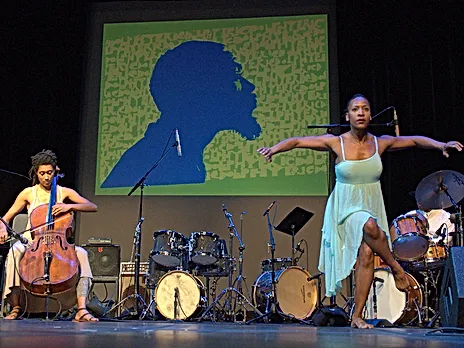
Tomeka Reid, Beatrice Capote, Andrew Cyrille
At our request, Reid and Capote worked out the music and choreography for a cello-and-dance take on Dolphy’s famous solo bass-clarinet version of “God Bless the Child.” A tribute to his fiancee, Joyce Mordecai, a ballerina. Members of Mordecai’s family attended the concert, and we’re pleased to say that they were deeply moved by the performance. Cyrille then joined Reid to back Capote with an improvised cello-and-drumkit duo. The audience swooned.
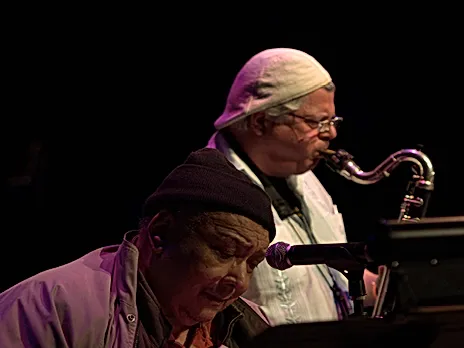
Michael S. Harper
Harper has been writing sophisticated, deeply personal and critically acclaimed “jazz poetry” for decades. Jazz not simply in spirit or cadence, but jazz as subject. We coaxed him down from Brown University to lay it on us, and he brought two very pleasant surprises: First, the debut of a new poem dedicated to Dolphy; second, his longtime collaborator Paul Austerlitz on bass clarinet. Sweet stuff.
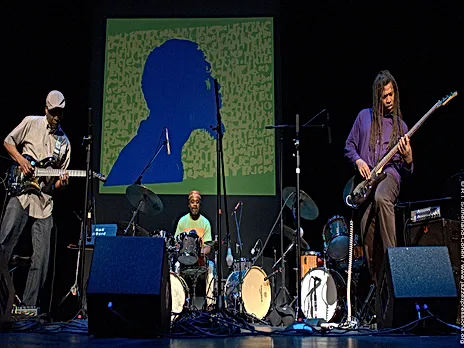
Vernon Reid, Melvin Gibbs, Pheeroan akLaff
Vernon Reid celebrating Eric Dolphy? Indeed. Ask Reid—no relation to Tomeka—and he’ll proudly declare himself a Dolphyite and describe the uniquely architectural nature of Dolphy’s compositions and solos. He’ll tell you that he has long worked Dolphy’s wild intervallic leaps throughout his own work. This was Dolphy as inspiration, and it shook the room. The highlight of the set? A tribute to Dolphy by way of Sonny Sharrock.
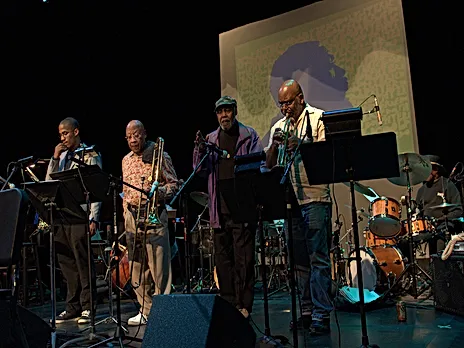
Grachan Moncur III
(James Brandon Lewis (ts), Ted Daniel (t), Alfred Patterson (tr), Jay Hoggard (vib), Angelica Sanchez (p), Richard Davis (b), Andrew Cyrille (d), Grachan Concur III (conductor))
Moncur was one of the most compelling innovators of the fertile Sixties jazz avant garde. Not just a virtuoso trombonist but a deeply thoughtful and daring composer. Although he didn’t play in this set, Moncur led a crackerjack band that included Richard Davis, Alfred Patterson on trombone, Ted Daniel on trumpet, and master-in-the-making James Brandon Lewis on tenor.

The Sound of Freedom Ensemble
(Marty Ehrlich (reeds, fl), Jun Miyake (reeds, fl), James Brandon Lewis (ts), Ted Daniel (t), Alfred Patterson (tr), Jay Hoggard (vib), Jerome Harris (g), Andy McKee (b), Pheeroan akLaff (d), James Newton (conductor))
There was only one way to close two nights of such historic import: the world premiere of newly discovered Dolphy compositions. James Newton, the man who brought these unheard works to light and is reshaping our understanding of Dolphy’s genius, conducted the group. Music history.
We would be remiss if we didn’t thank the many people who helped to make the inaugural Freedom of Sound festival not only possible but a great success.
Our Beneficiaries
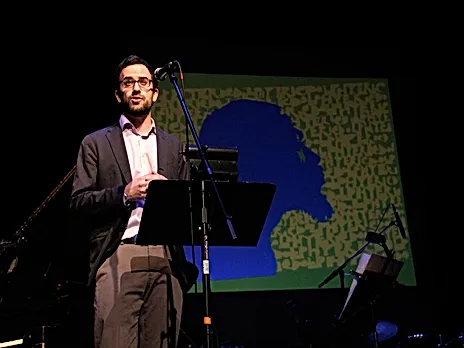
Jazz Foundation of America (JFA)
From financial support for housing and medical care to school-based children’s programming, JFA has been an indispensable advocate for musicians in crisis for more than 25 years. Seed Artists was proud to donate proceeds from the festival to further JFA’s many innovative projects. Joseph Petrucelli, JFA’s Associate Director, introduced the audience to organization’s good works and set the tone for the celebration of an artist whose generosity was as powerful as his music.
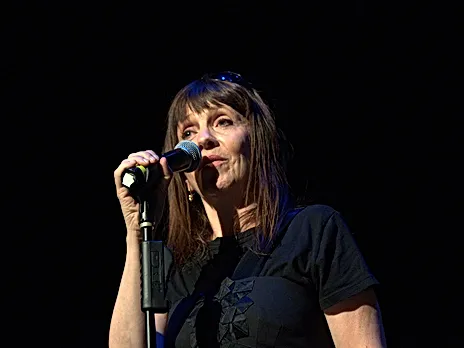
Montclair Academy of Dance and Laboratory of Music (MADLOM), our local beneficiary, has created innovative dance and performing and visual arts programming in Montclair, for children of all abilities, for seventeen years. Director Maya Milenovic-Workman, who co-founded MADLOM with bass legend Reggie Workman, gave a primer on MADLOM’s uniquely personalized approach to drawing out the creative abilities of her students. Festival proceeds funded tuition for a low-income child to attended classes.
Our Funders
No funding, no festival. As a first-time presenter for something of this scale, with no paid staff or an office or existing budget, Seed Artists was fortunate to receive financial support from two important institutional sources. They took a risk, and it paid off. How often do you get to make music history? Our deepest gratitude:
Founding Sponsors

RetailMeNot was the first Founding Sponsor to give us a boost. They’re the world’s leading online coupon site, and they have a highly active charitable-giving program that involves not just financial assistance but employee volunteerism.
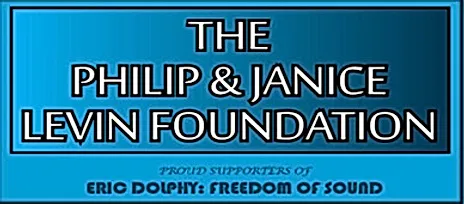
The New Jersey-based Philip & Janice Levin Foundation supports a broad range of educational, arts, scientific and civic projects–from Manhattan’s famed High Line to medical research at NYU and our humble Dolphy festival. Adam Levin, President, is Chairman and Cofounder of credit.com, and former Director of the New Jersey Division of Consumer Affairs.
Our Emcees
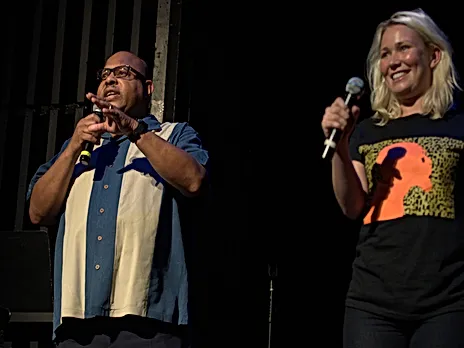
WKCR’s Sharif Abdus-Salaam and ‘KCR alum/Snugs Concert Series founder Anabel Anderson know the music and have committed their lives to it. So glad they agreed to help us welcome the audience and make folks feel at home. From the many hardcore Dolphyites in attendance to the Dolphy-curious and those who were dragged along by either/or, they spoke to everyone in the crowd and were top-notch advocates for the music and the causes the nonprofits that we funded through the festival. We were lucky to have them onboard.
The Production

Natalia Bernal and Jason Ennis made the whole thing run like clockwork. Smooth. She managed the production, he managed the stage–nary a hitch over two days. Remarkable given a first-time event with more than 40 performers coming and going in an unfamiliar space. Didn’t hurt that they’re two fine, fine musicians in their own right. She’s a vocalist, he’s a guitarist, and together they’re two-thirds of the trio La Voz de Tres. And married. Catch them playing around NYC.
Our Photographers
Many thanks to the two very fine photographers who shot the festival for us: RI Sutherland-Cohen and Chris Drukker. Both men are stalwarts on the jazz scene, and they came through with some stunning shots to document the Dolphy celebration.
